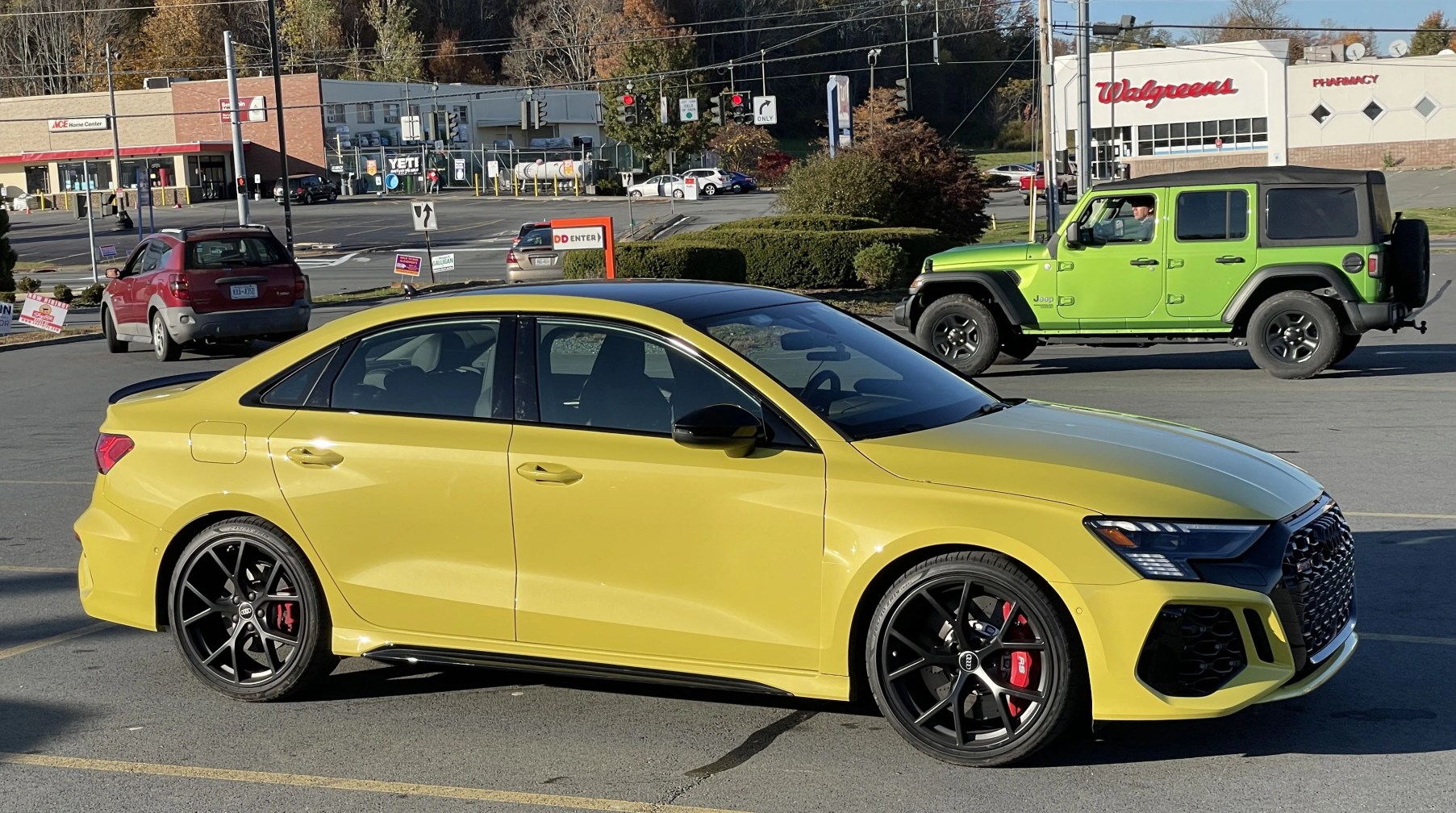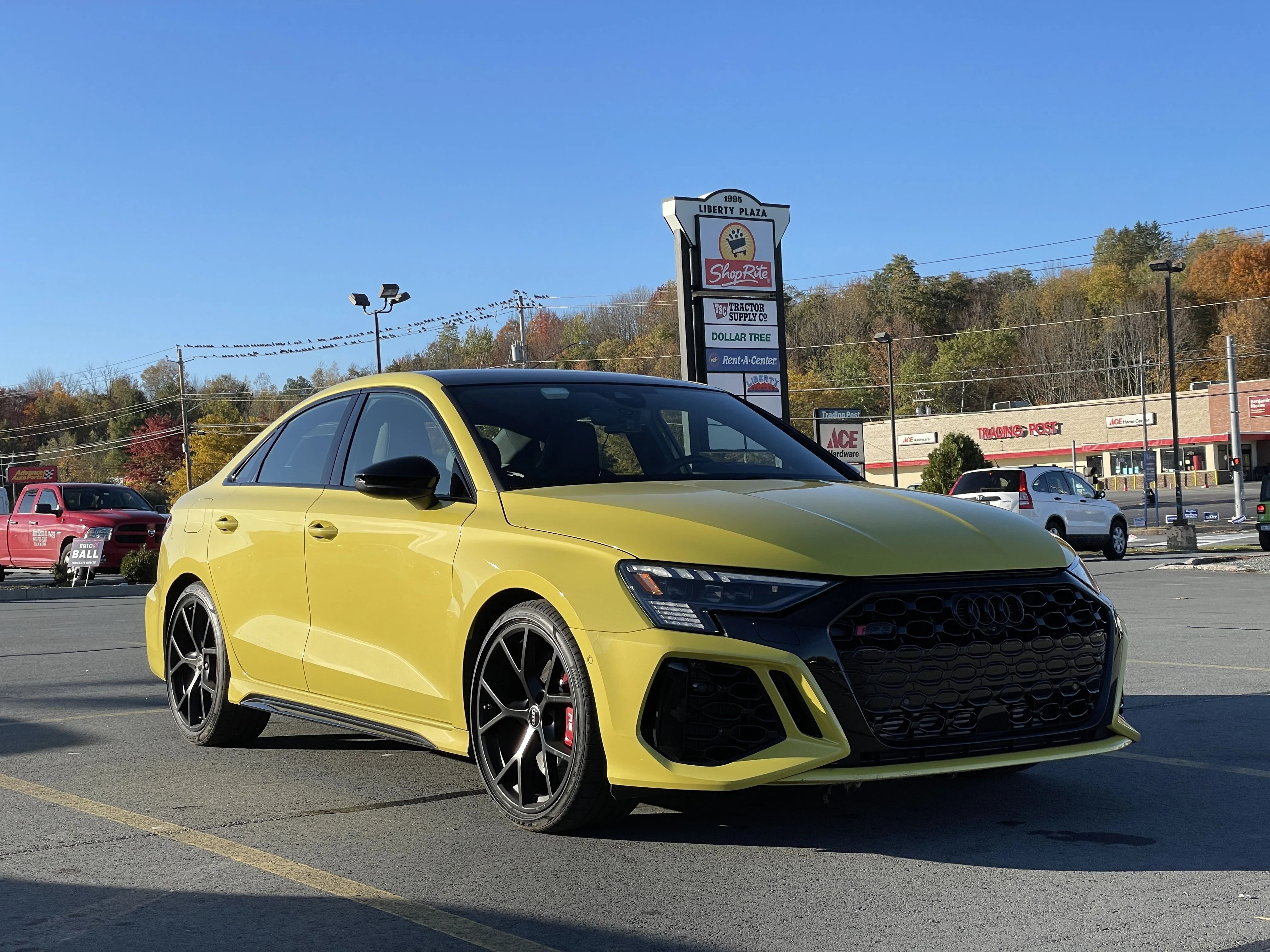As much as the tide of history might feel as though it’s rushing the wrong way to fans of traditional internal-combustion performance cars these days, when you stop and look at the facts rather than the narrative, it’s safe to say we still live in a golden age of gas-powered excitement. (I refuse to acknowledge times are bad for fuel-burning fun when the Hellcat still exists and GM just spent untold millions developing a revolutionary V8 for the Corvette Z06.)
That’s especially true for those of us who love German speed machines. Just a couple decades back, there were just a handful of such cars available here — one or two BMW Ms and Mercedes-Benz AMGs each, maybe three variants of the 911 — and they often came in compromised form; the iconic M3 was detuned for American use back in the ’90s, believe it or not. Smash cut to now: Porsche offers an entire multiverse of performance models, M is cranking out more powerful, more thrilling (if not more attractive) cars than ever, and while AMG’s line may have been temporarily weakened due to supply chain issues, they’re all back in force for 2023, with a new plug-in hybrid S-Class AMG cracking into new levels of power.
And, of course, we have Audi’s RS line, too. While RS models were rare occurrences in grunge era America, today, Audi offers seven so-called Audi Sport vehicles at once — eight if you choose to call the RS 5 coupe and RS 5 Sportback separate models, as the four-ring brand does. While the most exciting development in RS-land in recent years was arguably the U.S. debut of the Rs 6 Avant, the arrival of the RS 3 on these shores back in 2017 was a close second. Now, the itsy-bitsy sport sedan is back for a second generation, looking angrier than ever.
The Audi RS 3 has incredible performance, but you have to want to use it
 Will Sabel Courtney
Will Sabel CourtneyWith 401 horsepower and 369 lb-ft on tap and a body the size of a ninth-gen Honda Civic, you’d fully expect the RS 3 to be quick. And quick it is, dashing from zero to 60 mph in 3.3 seconds and doing the quarter-mile in 11.8 seconds at 117 mph, according to Car and Driver — the latter of which puts it neck and neck with a 911 Carrera 4.
But what those stats don’t reveal is just how much you really have to cane the turbo-five in order to squeeze all the juice from it. In regular driving, where the gearbox keeps the engine spinning below 2,000 rpm most of the time, the combination of turbo lag and gearbox kickdown lag means there’s a mighty pause between gas and go. Check out C/D‘s 5-60 mph time, which is more indicative of real-world acceleration; it stands at 4.7 seconds, which means it’ll wind up seeing the tail lights of a 10-year-old Dodge Charger SRT8 in a rolling race.



